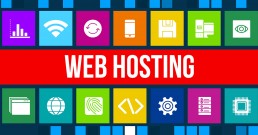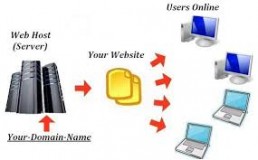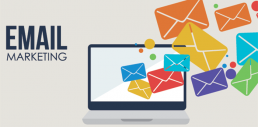Just How Important is Email Marketing for Small Businesses?
With a Return on Investment of a staggering 4,300%, email marketing is about the most effective marketing tool, small business owners and entrepreneurs can leverage.
Have you ever come across those junk emails that do nothing but irritate you, and the next thing you do is to look for the ‘unsubscribe’ link? Well, the senders of those emails hardly have any email marketing strategy in place. Gathering hundreds or thousands of emails, by whichever means, and sending sales pitches while hoping some customers will respond or purchase a product from you is by no means email marketing. If anything, using this method will guarantee you a spectacular failure regarding click-through and conversion rates. It would be best if you were more strategic in your email marketing campaigns. In other words, success in email marketing is not a function of trial and error or chance; it is a result of precision in terms of content and timing.
Here are three tactics you can use in your email marketing campaigns for higher ROI.
Timing is cardinal: Target the senses and consider the time you send your emails
Your customers don’t have all the time in the world to read every email that hits their inbox. It is estimated that the average number of emails that hit the inbox of an average busy person daily is 97. How many of these emails do you think can be read? With that in mind; if you are lucky, your email might be opened.
For an email campaign that is untargeted and/or sent at the wrong time, the most likely place it will end up is in the trash bin.
No matter how big your brand, most consumers will not spend more than a few seconds trying to figure out whether the email before them is worth opening and reading. You only have a small window of opportunity to seduce your subscribers to open your email.
Unfortunately, many marketers and small business owners squander this golden opportunity by sending their emails at the wrong time and using generic texts and images. Your success hinges on reaching and resonating with the recipient at the right time and delivering the right message.
When is the right time to send emails?
The long-standing advice to email marketers about the best time to send email has always been, “Tuesday, Wednesday, and Thursday, between 8.am and 10 a.m.” the logic behind this notion is that people tend to open their inboxes in the mornings. However, that may not always work as much as you would like. As it turns out, there are other unconventional times to unleash your campaigns.
Let us look at some important email marketing trends and stats. This will give us an idea of when the best time to send email would be.
- According to an Experian study, most emails are opened at night with unique open rates averaging 21.7% between 8 p.m. and 11.59 p.m. and 17.6% between 12. a.m and 4 a.m. Moreover, click-through rates during these times are 4.2% and 3.2%, respectively. Return on investment per email is also highest between 8.00 p.m and 11:59 p.m.
- Experian quarterly email marketing benchmark release also showed that emails sent on Monday have the highest ROI even though emails sent on Fridays have a higher click through rates. Ironically, fewer emails are sent on Saturday and Sunday despite the fact that these days experience higher click-through and conversion rates. According to Experian, unique open rates for Saturday and Sunday is 17.8%, which is higher than any other day of the week.
Based on these findings, you should send your emails at unconventional times, such as on weekends and during late hours (between 8: p.m and 11:59 p.m). You can also capture the early birds by sending your emails between (12:00 a.m and 5: a.m).
While this is not a blanket ban on conventional email sending time, it would be a brilliant strategy to counter the competition and stand out from the crowd.
In other words, try not to send your email campaigns when most others are sending.
Mjrvisuals can help you increase your reach out of that content through our expertise. We run the gambit of visual imagination, including video production, digital marketing, video editing, print design, advertising, graphic design, graphic animation, motion graphic and media design.
We believe everyone has a story; the question is; who is telling yours?
Recent Posts
Quick Website, social media and Blog Marketing Tips
One of the easiest ways to grow your social media community the whole day is to post consistently. Studies show that different audiences react to different posting frequencies, so you need to make sure that you have tested the optimal frequency with your own audience and look at the engagement levels in comparison with your other audience. The minimum post frequency on Facebook should be once a day and 4-6 times a day on Twitter. Also be mindful of the time of the day you post to increase engagement. You can automate the process by using tools like Buffer and Sway.
Use Images When Posting to Facebook
Including photos in your Facebook and Twitter posts will generate more engagement. According to various studies, posts with relevant images generate 50% more likes than the average text post. When you want to post about an offer or an announcement, include an image. This will significantly increase click-through rates.
Increase Exposure of your Communities With Social Buttons
Embed social media share buttons within your site and within your marketing communication to increase engagement. Does your blog have social sharing button displayed prominently within the posts to encourage leaders to share the article. Some of the places you need to consider include:
- Footer of the website or blog
- Header of the website or blog
- In your newsletter
- In your email signature
- Within your blog posts
Run a Launch Rock Campaign
What is a Launch rock?
A Lauch rock is a free service for gathering email addresses of people who want to get an early access to the launch of a new product, service, app or really anything. A lauch rock can be an effective marketing tool because it encourages word of mouth. One can integrate social buttons within the subscription process which is a very powerful component when it comes to turning a campaign into a viral marketing channel.
Here is an example of a launch rock:
The idea is to offer a free give-away or some other offer which works on friend-bring-a-friend model. Make sure the message has a powerful incentive.
Invest on infographic
Over the last few years, infographics have become very popular. A professionally designed infographic is a very potent traffic generator. A professionally designed infographic can cost you anywhere between $100 and $2,000 but will be worth the investment.
Write amazing headlines
The headline of a blog post carries a lot more weight than what many people think. No matter the quality of your content, a bad headline can drive away visitors. Here are some tips for optimizing your blog titles:
- Use every day, simple language
- Keep it short and catchy. Leverage common psychological traits like fear, urgency, desire, etc.
- Use negatives such as Never Do This, Don’t, Avoid, etc.
Create Micro Content
Many people are now suffering from information overload, which means that they have less time and patience to consume content. A growing trend which Australian marketers and business owners should consider is the creation of micro content for easy consumption. A great service that has mostly been used is the Vine and SoundCloud.
Host a Twitter Q&A sessions
One way to keep your social media fans engaged is hosting a periodic Twitter Q&A sessions. The idea is to encourage your community to ask questions and seek clarifications concerning your product, industry or business. You can provide answers, take their feedback and even create a blog post from that. Over time, more people will begin to take part and slowly your brand and audience will grow.
Webhosting Secrets Every Web Site Owner Should know
If you are serious about your business, make sure that your website is in good hands. Choosing the right web site host is the best decision you can make. Any server downtime can greatly ruin your business and limit your chances of growing your customer base. Sometimes, hosting a website can be such a confusing experience for web site owners, especially for the first timers. If this is your first time dealing with web hosting, it can seem like a maze of jargon floating around in the technical world. Be it as it may, I have gathered 10 simple secretes that you need to arm yourself with.
- You Get What You Pay for
With web hosting, what you pay for is exactly what you get in most cases. If you go for a cheap host, you’re most likely to get cheap services which include poor customer support, low bandwidth, and servers that crash more often than your PC.
Cheap is expensive. Beware of all the catch phrases in that advertisement banner. If you are serious about your business, you must also be serious about the host who is going to host your website. It is not difficult for people to fall prey to a bunch of spammers who will extract your private information, force advertisement banners on your pages, and extract your customers’ information, in the name of cheap web hosting offers.
It is quite unfortunate that many business people often care too much about the dollar side of web hosting services at the expense of quality, and professionalism. Choosing a web hosting service that will ensure your privacy, efficiency, and availability should be a priority of any web site owner. However, it is still possible to get a web hosting company that offers great services at a cheap price.
The following is a list of top ten web hosting companies and their prices.
2. Understand the "Free Domain" Gimmick
Buying a domain name independently Vs using a free domain offered by the web hosting provider is one of the toughest decisions you may have to deal with. It is critical that you understand how this works out before committing yourself to either of the options. The idea of getting a free domain name from your web hosting provider sounds great but there are things you need to into consideration:
● How long do you plan to use the domain name?
● Who will own the domain name?
● How much will it cost for subsequent renewals
Unless you are planning to use the domain name for a short campaign period, and you don’t intend to renew it afterwards, it is not advisable to go for the free domain name being offered by the web hosting company. Here is why: you may find yourself in unforeseen difficulties if you decide to change your hosting company in future as you may not be able to access the domain registration information. That means that the domain name is ‘free’ for you to use, but the ownership of the domain name remains with the web hosting company.
Essentially, you’ll find yourself in a situation where you are stuck with the web hosting company forever, or you are forced to pay a hefty fee to buy back the domain name.
3. Understand Domain Name Registration
Many people underestimate the concept of domain name registration. As a matter of fact, a domain name entails many things that will affect you in a number of ways in the future. Just like the web hosting services provide you with many options, a domain name also provides you with different features.
Therefore, not all domain registration companies have the same features. So, beware of those registrars that entice you with cheap prices because you may find that they lack some features. A good domain name should come with the following features at no extra costs.
● Should include your own control panel
● URL Redirection – It should make it possible for you to forward your domain name to another web address
● Email Forwarding for multiple addresses
● Full DNS control
● Sub domains
● Registrar Lock
If you buy a cheap domain name, chances are that you will have to folk out extra cash for the above features whenever you need them.
4. Differentiate Between Domain Name and Hosting
If you are new on this, it may get confusing. Nonetheless, the difference between the two has already been hinted above. All we are saying here is that it is not necessary that your web hosting company should also sell (or freely offer) you a domain name as well. You have the option of buying a domain name separately and forward it to your web hosting provider.
That domain names don’t have to be registered at the same web hosting company does not mean you cannot do it. All we are saying is that you need to do a comprehensive research into the whole thing so that you understand what you are getting out of it. Remember a domain name is your only online identity, and that is why you need to do more home work on it. In fact, it is the most irreplaceable online asset you can ever have.
Web hosting companies will naturally urge their customers to register their domain name with them, but you should also not forget that it is profitable for them. Therefore, you should find out whether it will be convenient for you to do that. For example, are your prepared to lose your domain name if the web hosting company goes down or you decide to migrate to another web hosting company?
5. Understand the Different Web Hosting Options Available
Before you buy a product, you must understand its features and know whether it is going to satisfy your needs. In the same way, the type of web hosting services you choose depends on your unique needs, which includes things like the size of your web site’s files, the number of visitors your expect, your preferred operating system and the nature of web site you intend to put up.
In that case, it would be great if you understood the different web hosting options available before signing up for one. There are 5 types of web hosting services available:
a. Free Web Hoisting
Well, free web hosting is free. This type of hosting is normally provided by web hosting companies as a way of giving their customers opportunities to taste their services. Otherwise, free web hosting services are suitable for those people who don’t anticipate a lot of traffic to their site.
Free web hosting services are best suited for non-commercial sites such as personal journals, photography, and so on. You expect to find the following features in a free web host:
● Low connection speed
● Limited storage space
● Frequent website downtime
● Advertisement appearing on your pages
● Limited technical support
● Low security options
● Limited software and apps options
● Limited number of pages
● You cannot use AdSense
● Limited database and statistics support
While some companies would require you to purchase a domain name in order to use their services, most of them will let you use a subdomain name under them.
b. Shared/Virtual Hosting
With shared hosting, server space and other resources are shared with other web sites. Shared web hosting is one of the cheapest web hosting services and one of the most commonly used.
The only disadvantage with it is that you are bound to experience web site downtime especially if you share with gambling or pornographic web sites. The following are some of its features:
● Low cost
● Own domain usage
● Good technical support
● Frequent web site downtime
● Multiple software usage option
● Limited security due to sharing server with many sites
● Limited database support
● Best for small business with not so huge traffic
- Dedicated Hosting
Dedicated hosting is the opposite of Shared hosting, here, you have a server dedicated to yourself. It is one of the most expensive web hosting services, but with it you can be assured of maximum security and efficiency.
However, with dedicated server, you are responsible for its maintenance and cost of operation. It is best suited for web sites that require many resources as well as those with high traffic.
The following are the features of dedicated web hosting service:
- Good for large business with high traffic such as Amazon, EBay, e.t.c
- Multiple domain name options
- Powerful email solutions
- Great database support
- Unlimited software support
- High security
- High cost
- Requires expert skills
- Collocated Hosting
In this type of hosting, one purchases a server, and have it hosted at a web host’s facilities. Here, you have full control of your server, and you can decide to do anything with it such as installing applications you need, add more ram and disk space, install a better perfuming CPU, and so on.
- The following are features of collocated hosting:
- High Bandwidth
- High cost
- Requires expert skills
- Great database support
- Unlimited software support
- Harder to configure and debug
- High security
Reseller web hosting is for web masters and online entrepreneurs who want to resell their own web hosting services to those who need them. Those who have many websites can also take this option as it will enable them manage many websites from one central location.
Having looked at that, it is best to look at the features being offered by the type of web host you want to sign up with. For example, you need to take into consideration your budget, type of business you are engaged in and the bandwidth (as well as disk space) you need.
Once you have selected a given type of web hosting you need, you can compare different offers from different companies. Suppose you decide that you want to deal with shared web hosting, you will realize that there are different companies offering that type of web hosting services. Therefore it is good you understand the features being offered.
Aside from that, you might also find the following suggestions invaluable when dealing with web hosting services
- Don’t go for long term contracts. Unless you are 100% sure what you will be doing in 5 years, it is advisable to go for short term contracts like one year rather unless you trust the web host. In most cases, you’ll be given ridiculously high discounts for longer periods like 2 years, 3 years, 5 years…
- Consider the Payment method. Most people prefer PayPal as a means of payment rather than credit cards as it is more convenient and safer. But if you trust the company, you don’t have any reason to worry.
- Always Back-up your files. You definitely can’t rely on your web host 100%. It can be considered unwise to fail to back up your online files in other places such as your PC. You never can tell what will happen in future.
How to Create a Smashing Brand: 5 ideas to refresh your online branding
Did you know that a strong identity helps your customers to remember you and makes you stand out in the marketplace? However, here is some news for you: branding is more than just shinny logos and a fancy name. Branding essentially involves helping customers to have a sense of belonging and attachment to your products, services, culture and values. If you want to create an unforgettable brand online, it needs to be consistent, recognizable and should appear across all aspects of your online presence. Learn how to create an unforgettable brand using these five tips.
- Are you prepared to spend some money?
When it comes to online branding, you cannot avoid spending some money. If you want to make more money, you have to spend more money. It means you will have to spend in things like social media, Ad Words, and content creation.
- Identify and convey your purpose
In order to create a powerful online brand, you need to create a defining purpose that will act as your compass. Sometimes it is good to go back to the basics. Why are you in this business in the first place? Does your mission and purpose translate into your online presence?
- Keep it real
Sometimes small businesses suffer into oblivion because of their insistence to look ‘big’ and corporate like. The truth of the matter is that you don’t have to. If you want your brand to stand out online, do not hastate to put your personality behind it. People are more receptive to people. For instance, try to include your picture in your company profile. You could also infuse some humor into the content. Authenticity should be your goal regardless of whether you are new in the market. Be passionate and you will attract passionate clients into your online business.
- Revisit your target audience
Do you really know who your target audience is? You need to know who your target audience are and where there are or where you can find them. Therefore, you need to make sure you can consistently target your audience so that your audience find content when they expect it.
- Conduct yourself professionally
Whatever you do, remember that this is business. So you should pay a close attention to how you conduct yourself. Avoid being remembered for the wrong reasons by ensuring you post or publish credible and factual content. Go for quality over quantity. You have probably heard the saying that goes: it is not what you say, but how you say it that is essential when it comes to marketing. Although your personality reflects on your startup at the beginning, the personality of your startup will become an integration of voices that write for your brand.
It is important to keep in mind that what is being said about your brand is very important; therefore, it is important to make sure you listen to your audience.
Mjrvisuals can help you increase your reach out of that content in your website through our expertise. We run the gambit of visual imagination including video production, digital marketing, video editing, print design, advertising, graphic design, graphic animation, motion graphic and media design. Be part of our portfolio of clients and let us tell your story to the world. Click here to visit our website: mjrvisuals.com/
Customer Insights Every Business Owner Should Know
The key to success in today’s small business can be summed up in three simple words. “Know your customer.”
It is a perfect adage for today’s environment in which longstanding practices and realities are melting away to reveal a transformed landscape where opportunities are abundant, but often more obscured. In this new environment, customer insight is not only important, but also imperative.
It is no secret. Small business profitability is deeply connected to customer insight.
But what is customer insight?
Customer insight means having knowledge about customers and markets that helps structure thinking and decision making. It’s about having the whole picture, visible to the whole organization, from executive to customer service.
Customers expect you to know who they are, what they want, and how they want to be addressed. They want to converse with you. They want to be listened to.
Consider these recent consumer survey findings from the analyst firm Digital Clarity Group:
- Only one percent felt their customer expectations were always met.
- Around 89 percent had switched providers due to poor experiences.
- A full 82 percent said that the company they abandoned could have taken steps to keep their business.
What does this tell us? It means gaining customer insight is one of the most important things in business.
The source of insight
The next question we should be asking is, where can we obtain customer insight data? Customer insight comes from combining data from a number of sources. It is about using all data sources and applying the correct weight to them.
Insight comes from compiling and combining evidence, from data, to paint a picture. Merging the market research and database marketing teams is a step in the right direction, but it’s only part of what is required to create insight.
Part of this process is to know your customer’s touch point data. The following are sources of important customer insight data:
These sets of data can be generated from the following channels:
- Social media data
- Enterprise data
- In store talks
- Email communication
- Website logs
- Phone communication
- News media
- Syndicated research data
- Forums and review sites
The challenge most business owners face is leveraging the data they collect in order to create the right marketing mix. They struggle to aggregate the data to form the right customer insights and disseminate the right actions.
Customer insight requires that small business owners address the following points.
- Who are your most valuable customers (MVCs)
- What do they want to purchase?
- What motivates them to purchase?
- Beyond transaction, how can you interact with your MVCs in a relevant and profitable manner?
- How can you customize aspects of your product or service in order to meet the individual needs of your MVCs
Indeed, having the answers to the above questions is no longer a luxury. Small business owners must not only find answers but also act on those solutions in order to drive growth and profitability of their businesses.
The ability of firms to understand customers one at a time across multiple channels will mean the difference between success and failure because customer-based strategies are the key to competitive differentiation in today’s business world.
Knowing how, when and what to offer a customer can mean the difference between a profitable versus an unprofitable business.
According to Data Mine, you know you are on the right path and have the right customer insight in place when you have adequately answered the following critical questions.
- What is the aim of this organization?
Why was the organization formed? It is important to have the big picture even as you go about your daily duties. Unfortunately, many small business owners get consumed with daily tasks that they forget the mission statement of the company.
What is the organization’s customer acquisition strategy?
Every organization must have a marketing strategy. Doing business without a marketing strategy is like driving in the dark without the headlights. You risk not only getting involved in a fatal accident, but you also risk moving in the wrong direction.
What do we already know (not think we know)?
Obviously, you already know a few things about your customers. It is important to be aware of what you already know so that you can have a starting place.
- What do we need to know?
Now that you know what you know, it is time to know what you need to know. Identify the knowledge gaps and get the right information. Find out what data you need to collect and what tools you need to collect the data and collect it.
· How are we going to priorities what is needed?
Bearing in mind the constraints of time resources, identify the most urgent needs.
How will we ensure insight is retained in the business?
After gathering the customer insight, you need to ensure that it is retained in the business.
In short, insight is provided when the right questions are asked and solutions provided. The following illustration illustrates this very well.
The building blocks of customer insight are:
· Clearly defined company aim and objectives
· Customer driven marketing
· Organized and accessible data
· The right people in the insight team
· Knowledge management
In order to achieve customer insight, people must work collaboratively in the organization and have a clear data strategy.
Customer insight is not employing an analyst, or even a team of analysts. It requires organizational commitment to change. If it was easy, every organization would have customer insight sorted.
Mjrvisuals can help you increase your reach out of that content in your website through our expertise. We run the gambit of visual imagination including video production, digital marketing, video editing, print design, advertising, graphic design, graphic animation, motion graphic and media design. Be part of our portfolio of clients and let us tell your story to the world. Click here to visit our website: mjrvisuals.com/
How do you Create Marketing Emails that Will Generate Instant YES?
When a well-crafted email hits your inbox, you open and act on it because it grabs your attention. These emails might look simple and natural. Achieving a clear, balanced and persuasive message takes time and effort, but it is worth it. In order to create an email that will generate positive results (people clicking your Call to Action), here are steps that need to be taken into consideration. Think of these steps as a logical staircase where you need to move from one step to another.
- Make your messages consistent and persuasive
Human beings like consistency. It is hard-wired in our brains. For example, once someone decides to do something, they would strive to make all future behavior to match past behavior. If there is a mismatch, the person immediately begins to feel that something has gone amiss somewhere. It is the same with the emails you receive.
An email campaign should have a consistent message to elicit an action. Emails that have a consistent and persuasive message always outperform those that don’t. A consistent and persuasive email should lead one to take an action.
An inconsistent message is one whose parts don’t add up, i.e. they offer contradictory information.
Example
Suppose that your email is something like “Unbeatable Discount on iPhone 6 this Week”, yet the headlines says, “20% off on all smartphones,” with many types of smartphones being presented.
Although the email may not be factually wrong, it is inconsistent and you are likely to lose some customers. Your message will be more successful if all the components agree.
- Use high quality and relevant images
Use images that are not only relevant to the offer, but also high quality and original. Showing stock images is an instant click-killer. Make sure your images supports the main messages and that they reappear on your landing page—the page your customer will land after clicking the Call to Action button. This will make people feel that they have landed on the right page.
- Have a great presentation layer
Treat your promotional email like a shopping window. The more inviting the presentation, the more likely people will want to enter your shop. Just having a great product is not enough to make people want to buy from you or sign up for your services. Having an inviting presentation layer in your email will grab the attention of your subscribers.
- Precision Targeting is Indispensable: Target the right audience
In theory, it would seem like sending an email to everybody will increase your sales, but that is not what expert marketers do. When it comes to sending email campaigns, targeting the right audience is very important. According to Marketing Sherpa, sending an email to untargeted database is counterproductive. Unfortunately, many small business owners do this all the time.
Collecting email list and blasting everyone that is on that list with an email campaign is akin to shooting in the dark, and it is a bad habit that you need to stop immediately. Why would you want males on your list to receive email offers about "fashionable bras" that you recently launched? Wouldn't that be shooting yourself in the foot?
Highly targeted email campaigns experience 208% higher conversion rates compared to the “batch and blast” emails. As a marketer, you need to rise above the mediocrity and segment your list. Optimized email marketing pays off big time. Marketers that use email segmentation record a higher ROI compared to aimless emails. Moreover, email segmentation drastically reduces opt-outs.
Here are the steps to take if you want to send targeted email campaigns:
- Target a high-value segment
Now that you have an email subscriber list, it is time to separate the wheat from the chaff. A good way to find valuable segment from the list is to look at your list bearing three factors in mind:
- How recent is the subscriber? Subscribers who have done business with you recently are more likely to respond to your email campaign.
- How often does the subscriber buy? Subscribers who purchase from your more frequently are more likely to respond than others.
- How much does the subscriber spend? Subscribers that have spent 50% more than your average subscribers are more likely to respond to your emails.
This is not the be-all and end-all email segmentation check list, but it is a good starting point.
- Target using demographics
If possible, divide your list into specific groups to enable you send personalized, targeted and relevant messages. Without further ado, here are five main demographic features you can use to segment your list:
- Geographical locations: if you are serving cross-border markets, dividing your list according to geographical location will make it easier for you to send emails at the right time. This will also ensure you don’t break respective laws and regulations.
- Age: you might have offers targeting different age groups, which means that you can target millennials/college students, baby boomers, little kids and retirees, among others.
- Gender: just as you might want to specifically speak to a college student or retiree, you might want to customize your offers and messaging based on gender.
- Industry: if you have lists that cut across several industries, it is prudent to segment your list based on industry to add another level of personalization.
- Persona: you should study your subscribers and understand them. Know what makes each of them tick and design email messaging around their persona.
Offering exclusive email content to target audiences allows you to offer exact solutions that solve specific needs/dilemmas and supports conversations that will drive your conversation rates and increase your ROI.
Email marketing is still one of the most effective ways to reach and engage with your customers. However, in the absence of effective email marketing strategy, you might not achieve your marketing goals.
Mjrvisuals can help you increase your reach out of that content through our expertise. We run the gambit of visual imagination including video production, digital marketing, video editing, print design, advertising, graphic design, graphic animation, motion graphic and media design. Be part of our portfolio of clients and let us tell your story to the world. Click here to visit our website: mjrvisuals.com/






